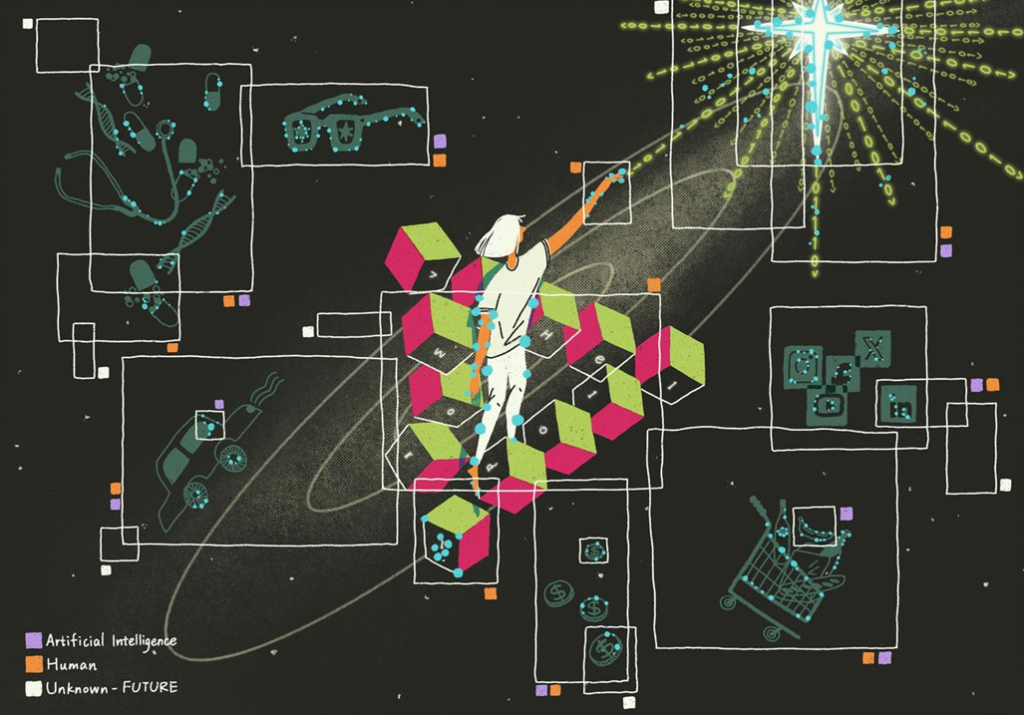AI Health Friday Roundup 2025
The AI Health Friday Roundup highlights the week’s news and publications related to artificial intelligence, data science, public health, clinical research, health policy, and more.

AI Health Friday Roundup
In this week’s Duke AI Health Friday Roundup: AI hallucinations offer opportunity for malware; how to read an article about AI; probing deficiencies in heart failure care; AlphaFold2 sometimes posits unlikely protein structures; challenges of implementing health AI in under-resourced health systems; teachers wrestle with AI in the classroom (and lesson planning); computational analysis shows decline in evidence-based appeals in Congressional speeches; much more:

AI Health Friday Roundup
In this week’s Duke AI Health Friday Roundup: general LLMs still trail locally trained models – but are improving; Stanford HAI releases 2025 AI index; rural hospitals and patients suffer from lagging infrastructure; Anthropic survey sheds light on how students use AI; report to Congress warns that US biotechnology lead is slipping; oxygen tolerance may have evolved earlier than thought; questioning the choice of benchmarks when modeling performance with health AI; much more:

AI Health Friday Roundup
In this week’s Duke AI Health Friday Roundup: teachers fret about AI impact on critical thinking; potential for coordinated multi-agent healthcare AI; the role of creative pursuits in shoring up mental health; avoiding condescension in the clinic; imaging AI shows disparate diagnostic performance; RCT evaluates therapeutic chatbot; correlations between wealth and health in US and Europe; rolling out an LLM-based documentation support tool; much more:

AI Health Friday Roundup
In this week’s Duke AI Health Friday Roundup: LLM framework for more flexible robots; PROBAST updates guidelines for AI predictive models; getting a handle on future dementia incidence; finding new targets for drugs with AI; NC Medicaid pilots cost more at first, then yield savings; 23andMe bankruptcy leaves consumers and researchers weighing options, risks; study queries docs’ opinions about ambient AI transcription in clinic; much more:

AI Health Friday Roundup
In this week’s Duke AI Health Friday Roundup: articles with three-part titles tend to get cited more; using AI to hunt errors in scientific literature; backpropagation for general-purpose LLMs; analogs of addiction in internet use; Faraday’s notebooks unveiled to public; journal click-through suffers as AI-generated summaries proliferate; framework allows selection of best AI tools for task; LLMs in wide use for search and research return substantial proportion of errors; much more:

AI Health Friday Roundup
In this week’s Duke AI Health Friday Roundup: study examines use of NLP for chart message routing; new nonprofit provides home for bioRxiv and medRxiv; study weighs patient preferences for AI vs human messaging; signs of AI “peer review” crop up in comments on a journal submission; the case for keeping both efficacy and safety as key criteria for FDA drug approval; “red-teaming” ChatGPT outputs in clinical settings; much more:

AI Health Friday Roundup
In this week’s Duke AI Health Friday Roundup: “tiny” ML poised to play a big role; new resource makes continuous-monitoring data from the ED available; Francis Collins departs NIH; patterns of uptake of large language model technologies contain some surprises; AI model predicts mental health risk for adolescents; remembering a prolific blood donor whose rare plasma was a life-saving boon to thousands; is AI capable of clinical reasoning; much more:

AI Health Friday Roundup
In this week’s Duke AI Health Friday Roundup: when AI departs from its original goals; flood of electronic messages for docs has not abated; weird patents are latest angle in bogus science credentials; foundation model for genomic prediction; clinicians report on ambient AI-powered scribing for chart notes; junk food excursions may affect the brain; respect for human rights understood as opportunity for AI; much more:

AI Health Friday Roundup
In this week’s Duke AI Health Friday Roundup: curated source for automated machine learning papers; using AI in the fight against epidemics; gene-spliced mice offer clue to human language evolution; NIH study sections remain in stasis; assessing spironolactone in myocardial infarction; when to use trial emulation; unpacking the implications of reductions in indirect costs; the role of environmental exposures in health burdens of aging; much more:

AI Health Friday Roundup
In this week’s Duke AI Health Friday Roundup: TRAIN AI consortium debuts; possible role for LLMs in doctors’ management decisions; AI company loses copyright lawsuit; is genAI use affecting human cognition and memory?; AI interprets ambulatory EKG data; looking at promise vs reality in CRISPR therapeutics; transplant data infrastructure needs updating; weighing regulatory possibilities for health AI; much more:

AI Health Friday Roundup
In this Friday’s Duke AI Health Friday Roundup: MASAI study tests AI for mammography screening; the growing health threat posed by microplastics and an association with dementia; LLM “translates” clinic notes into plain-language text; global survey on AI use in science; the indirect toll of morbidity and mortality exacted by flooding disasters; adopting zero-trust architecture for scholarly publishing; best practices for deploying trustworthy health AI; much more:

AI Health Friday Roundup
In this week’s Duke AI Health Friday Roundup: DeepSeek model release makes big splash in the AI pond, turns heads; lifestyle interventions to prevent cognitive decline; time to ditch USMLE as health AI benchmark?; relationships between education and life expectancy across US counties; junk science pumped out by paper mills permeates search results; figuring out LLMs’ place in the scientific enterprise; setting priorities for health AI; more:

AI Health Friday Roundup
In this week’s Duke AI Health Friday Roundup: examining AI’s prospects in drug development; mouse study suggests potential for xenon as Alzheimer’s therapeutic; advocating for a “master of digital health” degree; neuromorphic computing as next step in AI evolution; looking at how often the unexpected emerges from grant-funded research; narrowing the calibration gap between what LLMs “know” and what people think they know; much more:

AI Health Friday Roundup
In this week’s Duke AI Health Friday Roundup: amount of misinformation needed to “poison” an AI; projected burden of dementia may be greater than previously thought; will LLMs lighten clinician loads – or add to them?; how exposure to red light may be related to thrombosis risk; learning to do better with communicating science; leveraging LLMs to improve health equity; health systems scramble to assure compliance with algorithmic nondiscrimination requirements; much more:

AI Health Friday Roundup
In this week’s Duke AI Health Friday Roundup: TRIPOD releases LLM reporting guidelines; scrutinizing patient-facing genAI; prospects for a cytomegalovirus vaccine; protecting academia from predatory publishing; health implications of proteomic markers for loneliness; FDA releases draft guidance for use of AI in developing drugs and biologics; protein folding contest continues to evolve; the case for letting kids take risks in play; more:

AI Health Friday Roundup
In this week’s Duke AI Health Friday Roundup: pumping the brakes on “mirror life” experiments; talking federated registration for health AI; state of play for H5N1 infections in humans; privacy challenges for synthetic data; new access rules for federally funded research to go into effect; learning from longitudinal digital health; who owns the rights to your digital twin; can we build better LLMs with retrieval-augmented generation?; more:
